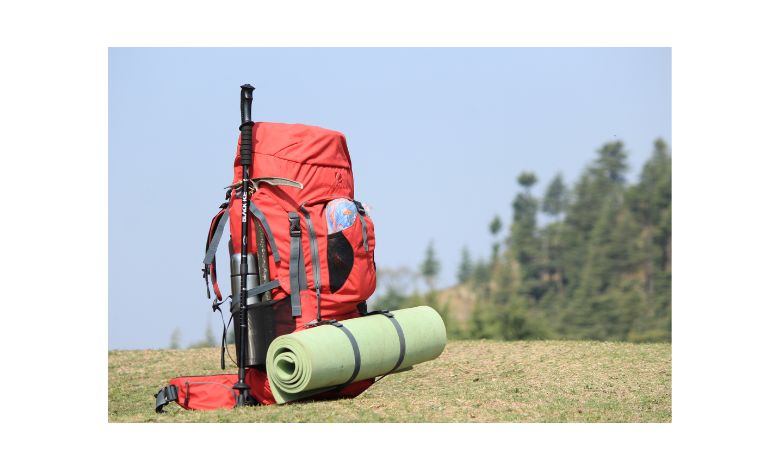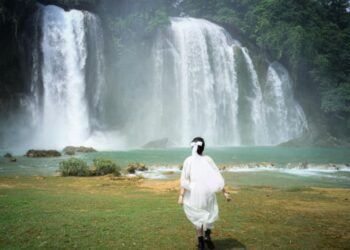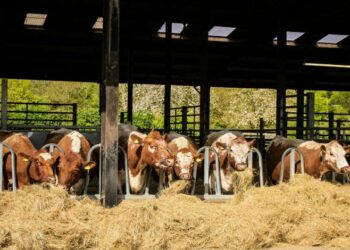Discover the best eco-friendly hiking gear for nature lovers, sustainable, durable, and perfect for your next outdoor adventure.
That was five years ago. Since then, I’ve slowly replaced my old hiking gear with new gear that not only works well but also helps the environment. And I can assure you that it has made the trip much more worthwhile.
This post will show you the best eco-friendly hiking gear. These goods will help you trek in a way that is good for the environment, whether you’re a weekend warrior or a seasoned traveler. You won’t have to give up comfort or performance.
What You'll Discover:
Why Should You Choose Eco-Friendly Hiking Gear?
Let’s talk about motivation before we get into the gear itself. What does it matter?
Well, every piece of traditional outdoor gear, such as plastic buckles, nylon coats, and synthetic soles, leaves an imprint. Most of them are created with fossil fuels, materials that can’t be recycled, or labor practices that aren’t good for the environment. And what happens when they wear out? Right to the trash.
It’s not about being perfect when you choose eco-friendly hiking gear; it’s about being aware. When you buy anything eco-friendly, you’re voting for businesses that do things better, like utilizing recycled materials, making less trash, paying fair wages, and safeguarding the wild places we love.
“Take only memories, leave only footprints” is an old proverb that fits here. Those footprints can be a little less heavy with the correct gear.
The Best Eco-Friendly Hiking Gear, by Category
Here are my favorite eco-friendly hiking gear items that I’ve tried, researched, and used on the trail.
1. Backpacks
Patagonia Black Hole Pack (25L–55L)
Why it rocks:
- Made from 100% recycled polyester ripstop
- Sewn with Fair Trade Certified™ materials
- Materials that have been approved by Bluesign®
I’ve used my 32L Black Hole for hiking for more than three years, from the foggy trails of the Pacific Northwest to the hot canyons of Utah. It’s strong, can stand up to the elements, and to be honest, it still looks brand new.
Second place: The Cotopaxi Allpa Travel Pack, which is also fashioned from recycled materials and has a colorful, patchwork design that shouts “adventure.”
2. Hiking Boots and Shoes
Vivobarefoot Tracker Forest ESC
Eco-cred:
- Foam made from algae and natural rubber
- Can be fixed and resolved (this is rare for hiking boots!)
- Minimalist design uses less material
At first, I didn’t believe in minimalist boots, but I wore these on a multi-day journey across the Sierras. They’re light, airy, and really help you feel the terrain under your feet.
For casual hikers: The Merrell Moab 3 Eco is a terrific all-around boot that is partly constructed of recycled mesh and laces.
3. Jackets and Other Outerwear
Vaude Men’s/Women’s Escape Pro Jacket
Key Features:
- Polyester made from 100% recycled materials
- Manufacturing that doesn’t hurt the environment
- Water resistance without PFCs
You know those storms that come out of nowhere and follow you up the mountain? I’ve stayed dry in all of them thanks to this jacket. And it packs down really compactly, so it’s great for putting in your daypack.
Also, look at Fjällräven Eco-Shell coats. A little more expensive, but stylish and useful.
4. Layers of Clothing
Icebreaker Merino Base Layers
Why they’re good for the environment:
- Merino wool from farms that are good for the environment
- Can be broken down in compost
- No shedding of microplastics (unlike synthetic materials)
When it comes to keeping you dry and smelling good, nothing surpasses merino. I wore the same Icebreaker shirt every day for four days in Yosemite, and it still didn’t smell bad.
Toad&Co and Tentree also manufacture great hiking clothes that are good for the environment.
5. Sleeping Bags and Pads
The NEMO Equipment Riff Sleeping Bag
Features:
- Fabric for the shell that has been recycled
- Waterproof without PFAS
- Bluesign® approved
This bag is great for shoulder-season camping because it keeps you warm down to 20°F. NEMO is also very dedicated to being environmentally friendly, even when it comes to their packaging.
Pair it with: Therm-a-Rest Trail Lite, an eco-friendly sleeping pad made from 50% recycled materials.
6. Cooking and Eating Gear
Sea to Summit Delta Camp Set
- Long-lasting and free of BPA
- Materials that can be recycled
- Easy to carry and stack
I’ve had mine for about six years, and it’s been through flames, bears (well, almost bears), and a lot of scrubbing in freezing streams. Also, skipping the disposables feels fantastic.
Don’t forget to bring a reusable spork and a dish that you can fold up.
7. Lighting & Electricity
Goal Zero Nomad Solar Panel + Power Bank
- Uses solar electricity, so you don’t need batteries
- Design that lasts and can be fixed
- Powers phones, GPS units, and headlights
This changed everything for me on my solo trip throughout Iceland. You might as well use the free and plentiful sunlight.
Headlamp pick: BioLite HeadLamp 425 – rechargeable, works well, and created by a B-Corp firm.
8. Water Filters and Bottles
LifeStraw Peak Series Filter Bottle
Benefits for the environment:
- Long-lasting filter means fewer plastic waste
- Materials that don’t contain BPA
- LifeStraw helps people by giving them clean water programs
This bottle will keep you hydrated whether you’re drinking from a stream fed by a glacier or just filling up at a trailhead tap.
Bonus idea: For longer trips, use a HydraPak collapsible reservoir. It’s small, strong, and free of PVC.
How to Tell If Your Hiking Gear Is Good for the Environment
Let’s be honest: not every “green” product is genuinely green. Be on the lookout for:
Look for:
- Certificates like Bluesign®, Fair Trade, or GOTS
- Materials that have been recycled or upcycled
- Packaging that doesn’t use plastic
- Companies that offer lifetime warranties or repair plans
Avoid:
- Vague marketing phrases like “eco” or “natural” without proof
- Gear that only lasts one season and breaks soon
- Things that have PFAS (also known as “forever chemicals”)
I learned the hard way early on when I bought a “green” backpack that ripped in half during my walk. It was basically a marketing gimmick. Now I always look a little deeper.
Tips for Sustainable Hiking That Go Beyond Gear
Gear is just the start. To be truly sustainable, you need to think about the whole picture:
- Stay on the path to protect delicate ecosystems
- Pack out everything you pack in, yes, even the compostable items
- Borrow or rent gear if you’re a casual hiker
- Support local paths to cut down on travel emissions
I took some friends who had never been camping in the backcountry before on a trip in the Rockies not long ago. We shared tents, stoves, and water filters. It not only lessen our impact, but it also made the trip more enjoyable and less expensive.
The Personal Benefits of Hiking Sustainably
You know what’s crazy? I love my hikes more now that I use eco-friendly hiking gear.
It’s like eating fast food vs a home-cooked meal. You feel better knowing where everything came from and how it was created. Not only does my gear carry my burden, it also tells a tale. Of choices that are thought out. Of honoring nature. Of taking the time to do things well.
Last summer, I went on a solo hike around the Olympic Peninsula and stopped by a quiet alpine lake. I set up my hammock made of recycled materials, made tea with my solar-powered kettle, and sat there watching the wind move through the trees. And at that moment, I felt it: tranquility, pride, and purpose, all in the simplest of routines.
Key Takings
- It’s not enough to buy the “right” eco-friendly hiking gear; you also need to live by what you say.
- We hike because we love being outside. And if we love it, we should be kind to those natural places.
- Every sustainable swap, every biodegradable utensil, every recycled jacket, and every shared stove, makes the world a better place.
- So pack smart, walk carefully, and leave the trail better than you found it.








